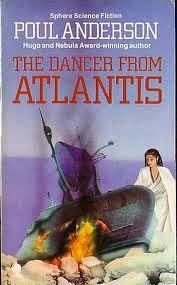In the Time Patrol timeline, a temporal vehicle can disappear from any set of spatio-temporal coordinates on Earth and instantly, as perceived by its passengers, appear at any other set of coordinates that has been entered on its control panel. Consequently, this timeline is permeated with arriving and departing time travelers, both civilian and Patrol. Manson Everard roves Gothland from 300 to 372 AD repeatedly on a single mission and he, in turn, monitors Carl Farness who interacts with four generations of Goths.
In 209 BC, there are on Earth:
hundreds of historical investigators, other scientists, entrepreneurs, esthetes and exotics;
Patrol stations in at least seven cities;
regional posts between the cities;
four Exaltationist time criminals;
Everard on a lone mission to apprehend the Exaltationists.
The Patrol stations and posts are scenes of continual arrivals and departures by time travelers and the hundreds of investigators etc are also able to depart and return at will. Also, because this timeline is variable, some time travelers depart never to reappear (in this timeline) and others arrive as if from nowhere/when.
In a scenario where time travel is less easy, it is also less frequent. HG Wells' Time Traveler, seated on his spatially immobile Time Machine and apparently the only time traveler in his timeline, does not travel instantaneously although he does have instruments marking the passage of time as measured not in years but in multiples of days. Is this because the Machine counts passages of the sun across the sky? Like Wells' Time Traveler, the mutant time travelers of Poul Anderson's There Will Be Time experience not instantaneous transition but accelerated day-night passages. Unlike the Time Traveler, they can walk around while traveling but must also interrupt their journey to breathe, which becomes problematic when their location is under water or ice. Oxygen tanks small enough to be carried become necessary for geological journeys. One time traveler designs a portable navigation device that scans the sky and informs him of arrival at his destination whereas others must cast about to zero in on their target date. To facilitate the return of some of their members from the day of the Crucifixion to the late twenty first century, the time travelers of the Eyrie organization erect in the ruins of Jerusalem a large billboard with a daily adjusted date - a far cry from the control panel of a Patrol timecycle.
This line of thought was prompted by reflecting on some peculiarities of the Warden-Rangers timeline in Anderson's The Corridors Of Time but that must await another post.

No comments:
Post a Comment